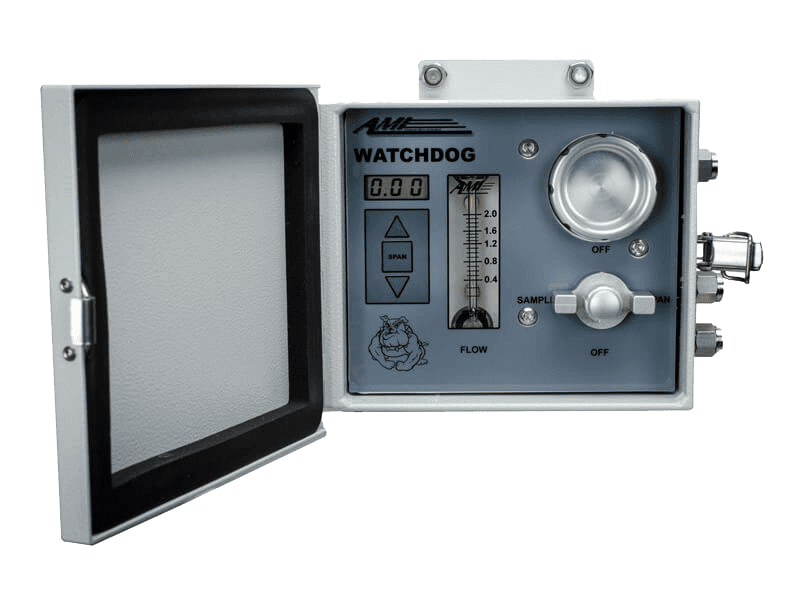Why Measure Trace Oxygen?
A common misconception is that oxygen will not find its way into a pressurized gas pipeline even if there are leak points in the system. The intuitive conclusion is that any leak would only result in the pipeline gas blowing out under pressure to the atmosphere. Unfortunately, this is only partially true.
To understand how oxygen enters a pressurized pipeline, the gases must be thought of on a molecular level, instead of the gross level that operators are used to dealing with. Gases are not homogeneous, non-compressible fluids but instead are a collection of molecules with large spaces between them. In fact, the relative size of any leak path is massive when compared to an oxygen molecule. Because of Dalton’s Law of Partial Pressures, gas molecules will act independently of each other and expand to fill the container without affecting the pressure of another gas. Therefore, when a leak forms, a large volume of molecules will move from the high pressure to the low-pressure area, while a meaningful amount of gas (ambient air) will transfer from the low pressure to the high-pressure side.
Some common sources for oxygen entry include:
- Pipe, flange or fitting leakage in both vacuum and pressurized systems
- Compressors packing leakages
- Improper operation of vapor recovery units (VRUs)
- Failure or lack of a tank blanketing system
- Flaring without proper systems to prevent air infiltration
- Using only purging instead of a “Block & Bleed” technique on a pig trap during pigging operations
Types of Oxygen Analyzers
Trace Oxygen Analyzers are available in 4 physical configurations:
Analyzer Design – Things to Look For
Several manufacturers offer different models of Trace Oxygen Analyzers. Though many use electrochemical sensors, they are based on distinct designs. And these Analyzer designs are not only proprietary, but they are responsible for the performance and reading accuracy being so different from unit to unit. So, make sure that you consider the following key elements in your evaluation.
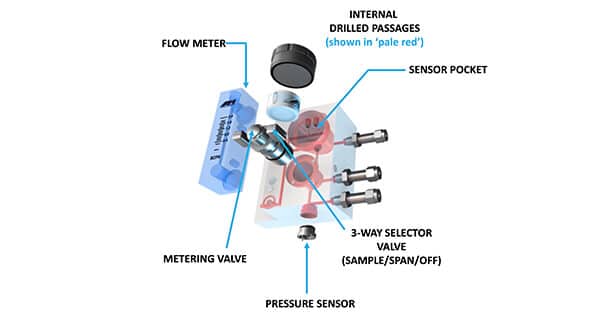
Sample Handling Components
Moving gas from the sample tap to the Analyzer’s inlet port and then its sensor requires having all critical sample handling components installed along the gas path. These include the flow meter, metering valve, stainless-steel tubing and selector valve for gas flow. Some Analyzer designs will even include optional components, such as the pressure sensor and temperature transducer. Any user considering a Trace Oxygen Analyzer should ask these questions: “Does this Analyzer have everything that I need? Or do I have to purchase additional components to install with my Analyzer before I can start taking measurements?”
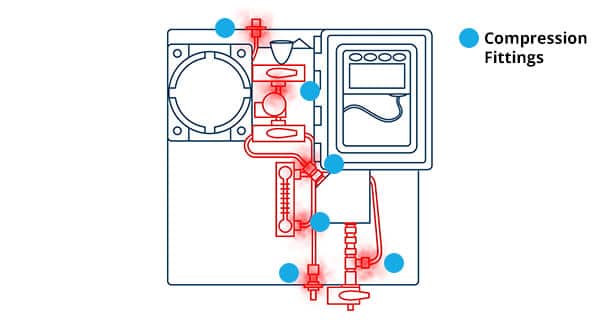
compression fittings are prone to leaks.
Susceptibility of Leaks in the Gas Path
In setting up a gas path for the sample, many manufacturers, as well as customers, turn to using long lengths of stainless-steel tubing with compression fittings. The compression fittings play an important role in connecting the sample handling components to the stainless-steel tubing. However, they are prone to leaks over time and can affect the performance of the Analyzer.
This is particularly serious for trace measurements because even the smallest levels of oxygen entering the system will impair the accuracy and reliability of the Analyzer’s readings.
However, unlike older designs, newer innovative Trace Oxygen Analyzers now connect the sample handling components to the gas path without a heavy reliance on compression fittings.
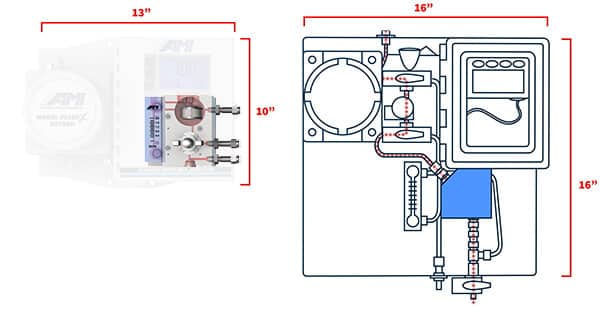
a much shorter gas path.
extends the gas path.
Length of the Gas Path
The Analyzer’s measurement response time reflects how fast the unit can deliver a reading. One of the design parameters that affects this is the length of the sample gas path. A shorter gas path delivers a faster reading, while a longer one does the opposite. Be aware that the actual gas path can consist of several turns and detours prior to reaching the sensor. If this happens, the resulting gas path may be several times longer than the overall Analyzer.
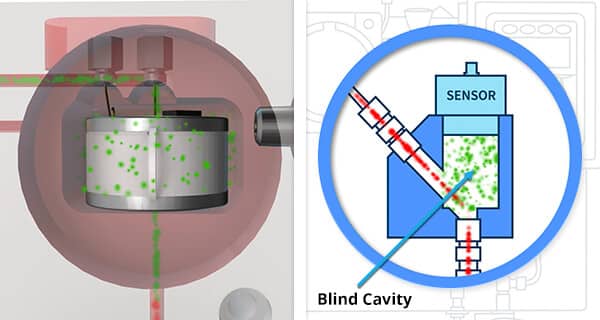
Flow Efficiency of the Sensor Pocket
The other parameter that affects the response time is the flow efficiency of the sensor pocket. A good design will allow a rapid and full purge of the sensor pocket. This will allow the sensor to respond quickly and detect any changes in the sample gas. In contrast, a poorly design pocket can have a ‘blind cavity’ that limits the exposure of the sensor to the sample gas and create ‘dead legs’ which slows the exit of ‘previous sample gas’ from the sensor area. All of which slows the Trace Oxygen Analyzer from delivering a measurement that accurately reflects the sample gas in ‘real-time’.
When examining a Trace Oxygen Analyzer, be sure to evaluate how well the sensor pocket is designed.
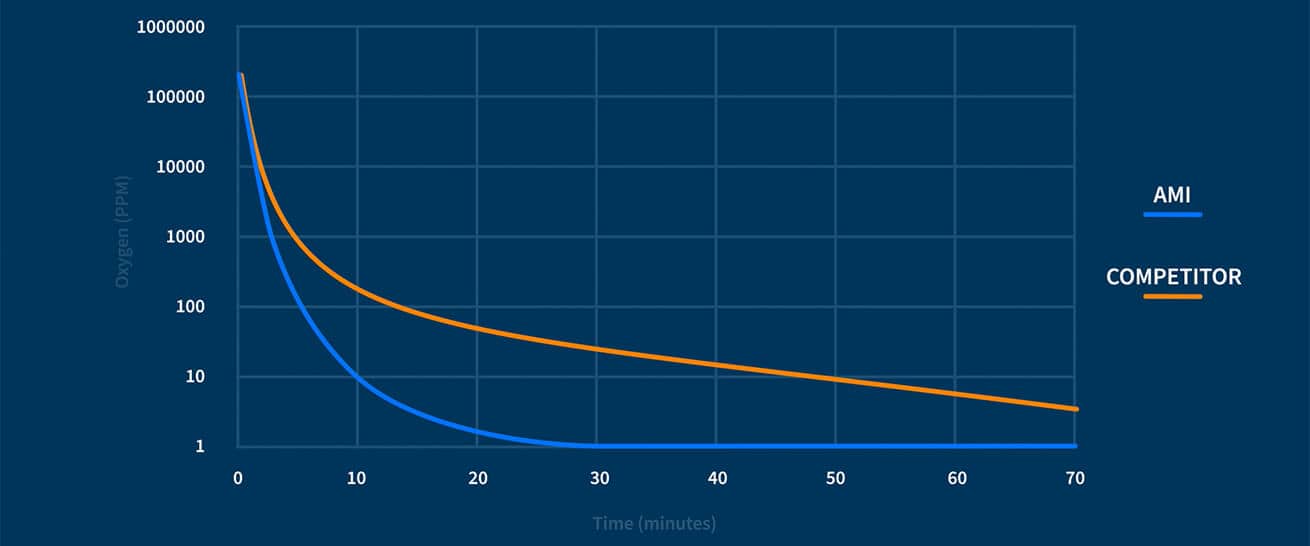
Sample Conditioning & Sensor Replacement
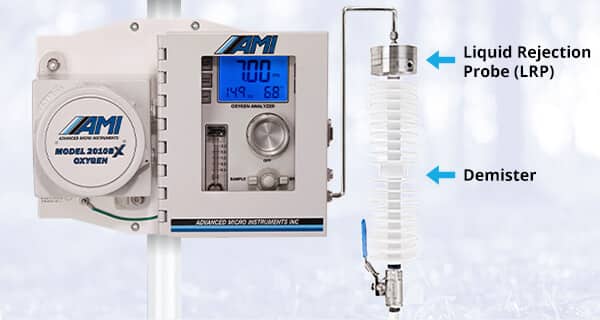
the sample gas prior to it entering the Analyzer.
You should install devices or accessories that properly conditions the sample gas with your Trace Oxygen Analyzer. The first one should prevent liquid from getting into the Analyzer and flooding it, whether the liquid comes from hot gas, wet gas or the occasional moisture slugs from the pipeline. If dealing with hot sample gas, the device needs to bring the temperature down to ambient levels to avoid condensation. The second device should regulate the sample gas to within the recommended operating pressure range of the Analyzer. This helps avoid stressing the internal components beyond their specified limits. Proper sample conditioning not only maintains the performance of the Analyzer but extends its operational life.
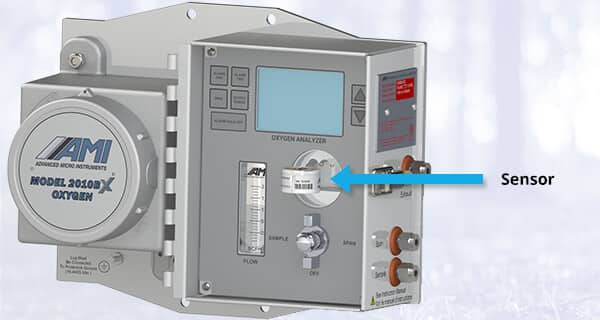
for easy replacement.
Every electrochemical Trace Oxygen Analyzer will need to have its sensor replaced periodically. The process can be relatively easy or very difficult, depending on the design of the Analyzer. Just understand that a time-consuming replacement can unnecessarily extend the exposure of the sensor to air, spike the Analyzer’s readings, and result in a long come down time before normal measurements can resume.






